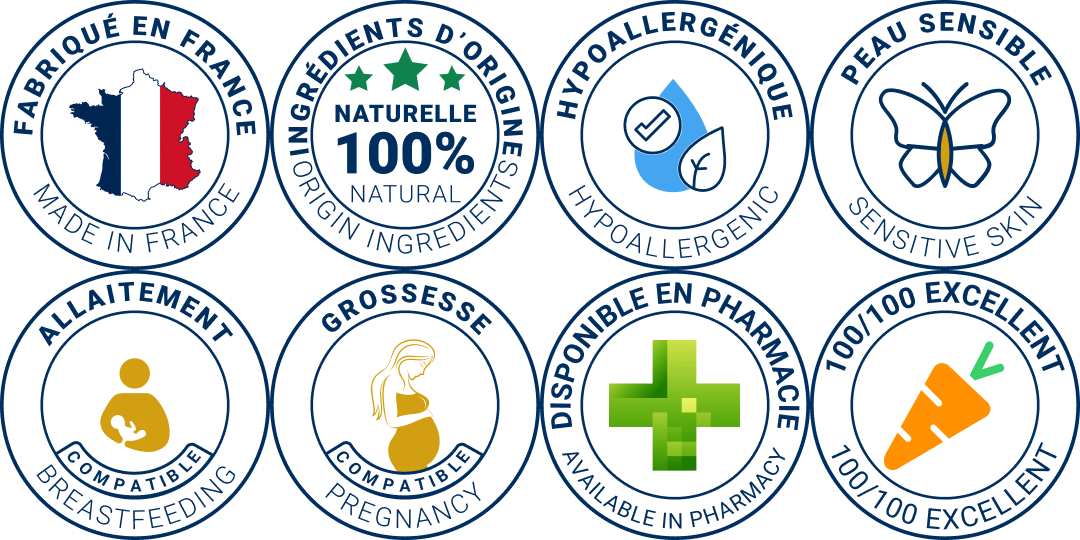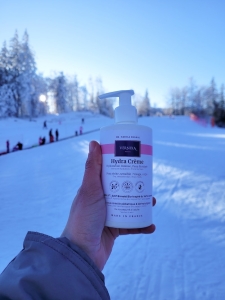Reading Time: mins
CI 42090, also known as Patent Blue V, is a cornerstone in the palette of colorants used in the cosmetics sector. The fascination with vivid, long-lasting colors in beauty products constantly drives the industry to innovate and find compounds capable of meeting these expectations. CI 42090, with its unique brilliance, plays a key role in giving cosmetic products intense, attractive shades. Its use nevertheless raises important questions about safety, possible alternatives and environmental impact, reflecting current debates on the composition of modern cosmetics.
The genesis of CI 42090 is marked by cosmetics manufacturers' quest for innovation, seeking to offer products that combine efficacy, aesthetics and safety. This colorant has survived the decades, adapting to regulatory standards and changing consumer expectations. Beyond its aesthetic contribution, it embodies the technical progress and regulatory challenges linked to the use of synthetic colorants in the cosmetics industry. This article takes you on a journey through the history, properties and challenges of CI 42090, shedding light on its current and future role in our beauty products.
The creation of CI 42090 is part of an ongoing search for high-performance colorants capable of offering unprecedented color stability and intensity in cosmetic products. This quest led to the synthesis of CI 42090, a synthetic colorant which, thanks to its specific chemical formula, achieves deep, brilliant shades of blue. The popularity of this colorant testifies to its importance in achieving the aesthetic desired by consumers and beauty brands alike. However, its use is not without implications, particularly in terms of safety and regulations, driving the industry to constant vigilance and rigorous controls to ensure user protection.
Over the years, CI 42090 has become an essential component in numerous cosmetic products, testifying to its successful adaptation to different market needs and expectations. Its ability to deliver intense, long-lasting blue color makes it a preferred choice for formulas requiring precise, radiant pigmentation. Nevertheless, this craze for CI 42090 has also prompted in-depth reflection on its environmental impact and safety, prompting researchers and manufacturers to explore new ways of minimizing potential harmful effects.
The use of CI 42090 in the cosmetics industry goes far beyond a simple question of color. It plays a crucial role in the visual enhancement of products ranging from shampoos and eyeshadows to shower gels and even some skincare products. Its ability to withstand harsh conditions, such as exposure to sunlight and contact with water, makes it an essential element in guaranteeing the longevity and brilliance of colors in cosmetic formulations. This versatility and performance make CI 42090 a pillar of color innovation, enabling brands to stand out and enrich the user experience with visually appealing products.
The recognition of CI 42090 as an asset in the world of beauty does, however, raise important questions about its safety. Regulatory standards, such as those imposed by the European Chemicals Agency, guarantee its safety for use in cosmetics, provided it is used in accordance with directives. These safety measures are a testament to the industry's commitment to consumer well-being, ensuring that aesthetic benefits do not come at the expense of health.
The visual impact of CI 42090 is undeniable; it transforms and beautifies beauty products, giving them a strong visual identity that speaks to both the imagination and aesthetics of consumers. This ability to create rich, memorable user experiences places this colorant at the heart of cosmetics brands' product development strategies, as they constantly seek to innovate and meet the diverse expectations of their customers.
The debate over the safety of CI 42090 in cosmetics is lively, attracting the attention of consumers, scientists and regulators alike. Classified as safe for cosmetic use after numerous studies and assessments, it remains essential to follow the recommendations for use to prevent any risk of irritation, especially for people with sensitive skin. These safety concerns highlight the important role of regulators and manufacturers in ensuring safe, quality products that reflect a commitment to the health and well-being of users.
Awareness of the potential irritant or allergenic effects of CI 42090 has led manufacturers to adopt preventive measures, including thorough dermatological testing before marketing products. This cautious approach underlines a growing trend towards transparency and accountability among players in the cosmetics industry, seeking to build mutual trust between brands and their consumers. It's also important to note that, despite its classification as a safe colorant, vigilance is still called for, and consumers are encouraged to read product labels carefully and carry out prior skin tests to assess individual tolerance.
The safety assessment of CI 42090 is a perfect illustration of the complex balance between cosmetic innovation and health protection. Indeed, while achieving aesthetic objectives, the industry must ensure that the use of this colorant does not compromise the well-being of users. The strict regulations and safety standards in force are the guarantee of our ongoing commitment to offering cosmetics that are beautiful, effective and safe.


All Rights Reserved | Tous Droits Réservés GTIN Compliance Hydra Lavant | GTIN Compliance Hydra Crème



